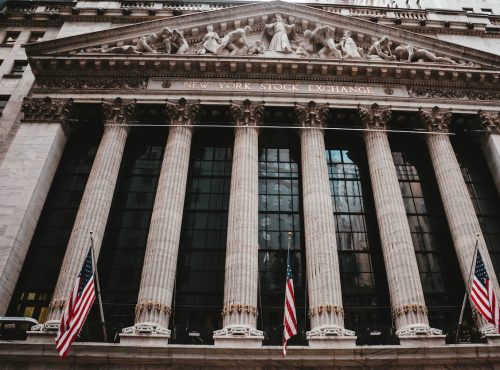
I must admit, I’m not too keen on the idea of being transported to work in one myself, but apparently driverless cars are the future. Hundreds of millions of pounds, for example, have already been invested in trying to make my own part of the UK — the West Midlands — a global centre for driverless technology.
I often read in the media about driverless cars being a once-in-a-generation investment opportunity. Online brokers (all the usual suspects) have tipped various stocks that investors should consider buying. But is it a good idea?
History teaches us to be cautious. In the third and final part of a three-part interview, DAVID CHAMBERS, Reader in Finance at Cambridge Judge Business School, warns against what is often called “new era thinking” — the idea that a new technology, like driverless cars, is SO revolutionary that you simply HAVE to invest in it. The railroad industry in the nineteenth century, he says, is a classic example of how over-excited investors can get their fingers burned.
What exactly is meant by ‘new era thinking’?
The concept of new era thinking has been associated with Bob Shiller, the Nobel Prize winner. It was Shiller who really first coined this phrase and it refers to the tendency of investors to get over-excited about new forms of technology that come along. This would have been true of railroads in the mid-19th century; it would have been true of electricity and the internal combustion engine in the 1920s; and then, at the end of the 20th century, it was true about Internet-related technologies.
Very often, these technologies represent something shockingly new. They represent a complete change in the way that firms and consumers can behave and they look as though they are totally groundbreaking innovations. There is a tendency, then, for investors to get terribly excited about what the payoffs will be for investors in these new technologies.
I certainly remember getting badly burned in the dot-com crash. But eventually there were some big winners, weren’t there?
Yes, and everybody points to Amazon and eBay and some of the other technology winners. Another belief of these new-era-thinking investors is that they can pick those winners. Well, maybe, you’re incredibly talented or you’re incredibly lucky and you can. But what is closer to the truth is that, as a group, these investors tend not to pick the winners. Or they might pick them, but they also pick an awful lot of losers.
That’s because what we forget each time these technology booms, or technology shocks, come along, is that although there is a huge pay-off in terms of the benefits that these technologies can bring, these pay-offs accrue to the economy as a whole and, in particular, the users of the technology. Only a sliver of the benefits actually remain with the investors.
It was William Nordhaus, the famous Yale economist, whose research showed this to be true in the case of electricity, and also with computing. The same was true with railroads and with the dot-com industry.
Why should that be? Why don’t these important new technologies deliver good returns across the board?
The reason is that, with these new technologies, you get a huge influx of new entrants into that new space. You get a lot of investment, partly financed by money that’s raised during the bubble on the stock market. It’s that new capacity which drives prices down. So the firms, therefore, are facing this steeply declining price curve and the on-going gains that investors thought these firms would deliver usually don’t materialise.
Again, there are exceptions — there are a few winners. But if you’re looking, on average, across the firms participating in that technology boom, that is not the case. The gains for the economy and for society as a whole are unquestionable. But the question that investors need to ask themselves is: how much of those gains am I going to hold on to?
Another study of yours that caught my eye was the paper you wrote with Rui Esteves at Oxford on the Foreign & Colonial Investment Trust between 1880 and 1913. Tell me about that.
As its title suggests, the FCIT is an investment trust, sometimes known as a closed-end fund. The fund is still listed on the London Stock Exchange today. It was originally set up in the 1860s, and so it is the oldest surviving closed-end fund that exists anywhere else in the world, with a continuous investment record.
The interesting thing about going back and looking at the trust’s early history up to World War I was to look at what kinds of investments they were making. They published their list of investments every year. That doesn’t sound unusual these days, but if you go back 150 years, it was highly unusual for investment managers to tell you what they were invested in. On the contrary, they thought they should keep it private because otherwise they’d be giving away their inside information or a competitive advantage.
By looking at the lists of investments the FCIT was making, it was very soon apparent that this was an emerging market portfolio — and not of shares, but of bonds, which were the dominant investment in this period of time. They started out by investing in emerging country bonds . Then, around 1890, they migrated towards investing in corporate bonds. Railroads was a big industry that they were invested in.
And I think that the interesting lesson that come out of that is that there were substantial risks. They did invest in some bonds that led to some corporations going into default. But what they told their investors was that, if we build a diversified portfolio for you, then we will be able to diversify those risks away.
With the extra yield they would get over, say, a British government bond, even though it might take a few hits in terms of defaults, overall it was still able to generate an extra return.
Another interesting finding from your research into the FCIT was that it had a very low turnover, certainly by today’s standards.
Yes, they had this very patient buy-and-hold approach. The turnover of investments in the portfolio was between 10 and 15% each year. They would hold each security for between eight and ten years.
This was true even through the financial crises that recurred during this period of time. There was a big crisis in the early 1890s and again in 1907 and, on both occasions, we saw no evidence at all that the fund managers of the FCIT panicked at all. They stuck with their positions and, if anything, they were somewhat contrarian in putting money into those issues that dropped sharply in price.
So, this was a little bit surprising and, of course, it contrasts with the way that some investors behave today, where we observe much higher levels of portfolio turnover. There’s a tendency for some investors to think about cutting their positions when they’re in a market crisis.
Equally, of course, there are other investors out there who are able to adopt a more contrarian position. Over longer periods that, if anything, is the type of approach which has a tendency to perform better.
If you missed the first two parts of this interview, you can catch up here:
Part 1: Even Keynes couldn’t time the market
Part 2: How and Why do IPO stocks behave differently?
Picture: Warwick Manufacturing Group










